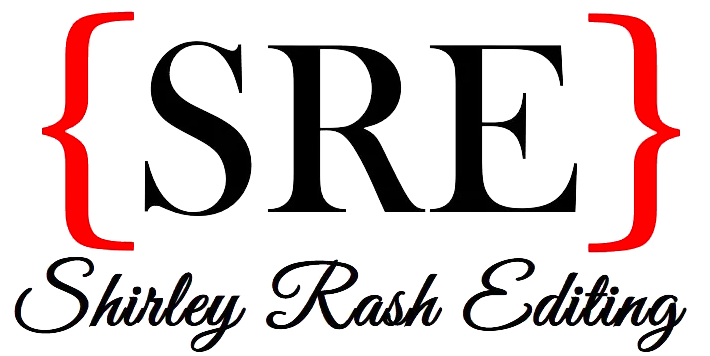As some of you know, I work part time at my local library in addition to running my own editing business. I love my library job and appreciate the fact that, since it is a small rural public library, I often get to do things that would ordinarily be limited to professional librarians with MLS degrees. I do a fair amount of reference work and program development, as well as working the circulation desk, but one of my favorite things to do is readers’ advisory (RA). I’ve long maintained that working at a library makes me a better editor and that working as an editor makes me a better library associate, and RA is one of the reasons I believe this so strongly.
Saying I provide RA services to patrons is a formal way of saying that I’m the person whom people are referred to when they need help finding something new to read. It’s a fun challenge–I’ve handled requests that range from “crime fiction, the gorier to better” to “gritty mysteries with no profanity” to “horror set in insane asylums” to “funny Southern fiction”–and a few weeks ago, I presented a training to my library coworkers on how to offer effective RA services. In the process of working on the presentation, it dawned on me that a lot of this is useful to writers too.
Every RA librarian is going to have a different process for finding readalike suggestions, but often, it involves identifying what appeals to that specific reader and identifying those traits in other titles. There are a lot of great resources out there that can help library staff members with this, but in my experience, no two patrons are going to receive the same suggestions, no matter how similar their tastes. Suggestions will overlap for sure when readers have similar taste, but even people who like the same author may find different things appealing in those books.
However, the process of thinking about the appeals of different authors and titles is immensely useful, and it’s become a practice of mine to identify readalikes for things I read for pleasure, as well as for popular books that I know are likely candidates for RA requests.
Why is this relevant to writers?
If you have any interest in traditional publishing (either by querying agents or publishers), you will almost certainly be required to identify comparative titles for your manuscript, usually three to five but possibly more or less.
In my experience, this can be a real struggle for authors, and to be fair, identifying comparative titles quickly and effectively takes some practice.
Your default reaction may be to rush through this part of the submission package to prioritize other elements or to just Google five random titles with a tangential connection, but thinking like a librarian and identifying solid comparative titles is a boon to your sales pitch. It can help separate you from the other authors also submitting.
For starters, it demonstrates that you’ve done your research–and that’s something publishers and agents always like to see. People who’ve done their research are much less likely to waste their time. Knowing what is similar to your book that is already on the market can even help direct you to publishers and agents that may be a good match for your manuscript.
It also demonstrates that you are thinking about marketing. For many authors, marketing is a necessary evil to be endured, but as marketing increasingly becomes the responsibility of the author, it’s worthwhile to do your own due diligence here. Publishers like to see someone who demonstrates they are taking seriously the marketing duties that come with being an author and are familiar with the contemporary scene in their genre.
I’ve heard of some authors arguing that they can’t find comparative titles because there is nothing like their book on the market, but that isn’t the answer that the publishing industry wants to hear. On the surface, it may seem to be touting how unique the book is, but ultimately, publishers want books that sell. Telling them there is nothing else like this book on the market often comes across as saying there is no market for this book. That’s not the impression you want to give when you pitch your book.
Instead, being able to identify a few titles with similarities to your book while also being able to identify what sets your book apart is a much better look–it shows that there is an audience for the book out there while also demonstrating that what you’re doing is not completely derivative and has its own unique qualities that will set it apart.
Does this really matter if I’m self-publishing instead?
I’d argue that it is even more important for a self-publishing author since you’ll likely be solely responsible for your own marketing. In this case, you won’t need to know comparable titles as part of a pitch to be published, but you’ll still need to know this information if you want to effectively sell your books. Evoking similar authors and titles is a great way to provide potential readers with a concrete sense of what your book is like. You can use effective readalike comparisons in everything from the blurbs you write on your cover to the copy in your ads to your elevator pitch when someone asks about your book.
What are some general rules about generating comparative titles?
- Try to be accurate. This may seem like a given, but providing books that are not an accurate comparison with your manuscript is not going to help. If you can’t explain why it is a comparative title without sounding like you’re stretching, you probably are. Try to find another book that is a better fit.
- Read the books you list. Similarly to my first point, you’re not going to know if the comparative titles you list are accurate unless you’ve taken the time to read them. It’s not enough to just skim the descriptions on Amazon. Sometimes the descriptions are not accurate. Also, as previously noted, being familiar with your genre is an asset–you need to be reading recent titles in it even if they ultimately are not comparative titles for your manuscript.
- Think in terms of elevator pitch formulas. Often the comparative titles for a book are expressed in terms of “X meets Y” or “X but with Y.” This is especially true if you’re crafting your own marketing material or writing a submission that doesn’t explicitly call for a list of comparative titles. It’s effective phrasing that lets everyone from publishing professionals to potential readers get a feel for your manuscript. It can also help you with that whole business of explaining what your book is like but also what sets it apart. Some examples of this (which I just made up): Mexican Gothic meets Pachinko. [This suggests an atmospheric gothic novel that delves into Korean mythology, culture, and history.] Educated meets The Road to Jonestown. [This suggests a gripping, gritty memoir about growing up in, if not Peoples Temple with Jim Jones, a similarly disturbing cult that ends in tragedy] The Thursday Murder Club but with vampires. [This implies a witty amateur sleuth mystery, probably one starring elderly characters, with a bloodsucking twist.] Just make sure your examples fit the comparison phrasing. Calling a book Mexican Gothic meets Rebecca is not particularly effective since Mexican Gothic itself is already evoking the gothic horror of Rebecca and putting its own unique spin on that genre.
- Use newer titles. The comparative titles you choose should be fairly recent (published in the last few years.) If there is a comparative title that is a classic or that is older that is absolutely perfect and you can’t leave it off the list, just limit it to the one and ensure the others you provide are more contemporary.
- Authors can also work as comparative titles. If there is an author whose work as a whole functions as an appropriate comparison to your manuscript, definitely include that. As long as they have a specific-enough style, it’s still providing important details about your manuscript. Examples of this (again just off the top of my head): Louise Penny meets Madeline Miller. [That implies a rather philosophical, lyrical mystery with a strong sense of place and leisurely pacing, as well as historical fiction with a heavy emphasis on classic Greek mythology.] Nathaniel Philbrick meets David Grann [This implies well-written and well-researched historical fiction, perhaps about maritime history, intersecting with well-written and well-researched profiles of unusual people, likely with the author’s own personal experiences working on the project as an integral part of the manuscript.]
- Factor in tone. A common assumption about RA that bleeds into comparative titles is that book recommendations have to have similar storylines to be effective readalikes. This is not always true. Often tone and mood are a much better litmus test of whether something is an effective comparison. Definitely include comparative titles that are a good match for the tone and mood of your book, even if the plot is not similar.
- Prioritize books. Sometimes, a very effective comparison for your manuscript is not another book but rather a movie or a TV show. I’ve certainly mentioned to authors that I liked some feature of their book because it reminded me of a particular film. That being said, heavily emphasizing non-book comparative titles over books is going to indicate that you don’t have a true grasp of the market for your book. If you’re going to include something that isn’t a book, limit yourself to one and ensure that it really is a very apt comparative title.
- Don’t assume it works just because it’s the same genre. This is, again, something else that pops up in the process of doing RA work at the library. It’s easy to assume that all mysteries or all historical nonfiction are interchangeable and will appeal to a fan of the genre, but that is just simply not true. Really factor in whether the books have common elements and appeals (and that can include everything from plot to tone to theme to characterization to setting to pacing).
- Avoid naming very popular bestsellers. Referencing books that are runaway hits can sometimes make it appear as if the author has unrealistic expectations about their book and how it will perform when published. Again, if there is a bestseller that fits perfectly, include it, but try to ensure the other titles you list are a bit more midlist (books that sell without being bestsellers).
As noted earlier, it takes practice to get providing readalikes/comparative titles down pat. It’s also easier as you gain more familiarity with the market.
It certainly has its own complications, too, when you’re having to put aside your own feelings as an author to think objectively about your book and its place in the market. That’s not something that a librarian has to deal with when suggesting readalikes.
However, the time and effort you put into it will only benefit you, and if it is something you’re struggling with, I do help writers with their submission packages.
I’m not going to say that the comparative titles you offer are going to make or break your submission–that itself is a stretch–but when done effectively, they can help emphasize to agents and publishers that you’re an informed and serious professional, and they can also help you with selling your book, no matter whether it is traditionally published or self-published.
Interested in learning more about how to identify comparative titles? Have you already thought of some good comparative titles for your manuscript? Need help with comparative titles in relation to your manuscript? Just looking for a good readalike for a book you’ve recently enjoyed? Tell me in the comments!





